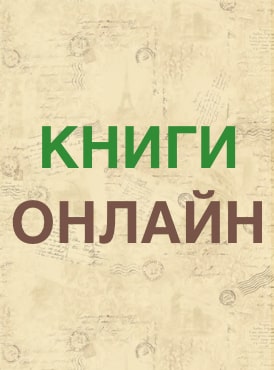В пучине бренного мира. Японское искусство и его коллекционер Сергей Китаев - Евгений Семенович Штейнер
- Дата:13.02.2025
- Категория: Научные и научно-популярные книги / Культурология
- Название: В пучине бренного мира. Японское искусство и его коллекционер Сергей Китаев
- Автор: Евгений Семенович Штейнер
- Просмотров:0
- Комментариев:0
Шрифт:
Интервал:
Закладка:
These are the cities where I was buying: Tokyo, Kyoto, Yokohama, Osaka, Kobe, Shimonoseki, Nagazaki, Hakodate, Nikko, Nagoya, Tsuruga, Kagoshima. In villages: Otsu, Mianoshta [Miyanoshita at Hakone], Inasa, Atami. There were other places, but their names I do not remember. My agents (ojiji san – “old men”) canvassed the length and breadth of J[apan] for several years[215].
E-6
Letter from Sergei Kitaev to Pavel Pavlinov
Aug. 20, 1916. Department of Manuscripts, Pushkin State Museum of Fine Arts, Moscow (stock 9, inventory II, document 608). Kitaev writes that he has all fifteen volumes of the rare first edition of Hokusai’s Manga. The 2008 Pushkin Catalogue excludes these lines in its transcription of the text and inserts a few words to smooth the gap. There are ten offending graffiti marks on this page, including, in the upper righthand corner “A Letter of S. N. Kitaev to the artist P. Ia. Pavlinov”, and the underlining of names of Japanese artists. Kitaev uses letterhead from the Chernovo Coal Mines of the Zamyatin Brothers Company.
E-7
Sergei Kitaev
One page of the Brief List, a description of his Japanese print collection, from a draft of a letter to Vasily V. Gorshanov. 1916. Department of Manuscripts, Pushkin State Museum of Fine Arts, Moscow (stock 9, inventory I, document 22).Kitaev’s letter to Gorshanov was published in the 2008 Pushkin Catalogue (vol. 2, p. 549), but without its main component, the Brief List; the second line of Kitaev’s list mentions thousands of prints by Hokusai.
Kitaev made acquisitions in all ports from Nagasaki and Kagoshima in the south to Hakodate in the north. He did not miss Otsu, famous for its folk pictures, and “the Russian village” Inasa in Nagasaki Bay, where the Russian naval base was established in 1859. On the other hand, all evident advantages notwithstanding, there was a serious problem: in port towns (especially, Yokohama and Kobe) a significant part of the art market was targeted at foreigners, as discussed below.
Kitaev had every reason to call his collection “an encyclopedia of the arts of all Japan[216].” He was not just an amateur who was buying pictures he liked, without any system. Kitaev took care to represent Japan the country through its art. The bulk of his collection was formed in Japan before 1895, when he reached the age of thirty, although he continued to add items through his agents when he settled in Saint Petersburg. He also thought about the benefits to the public and future specialists. Nagata Seiji noted in his introduction to the catalogue of the collection’s 1994 exhibition in Japan: “The huge variety of the materials of this collection is its particular feature. From the scholarly viewpoint, Japanese art is represented in a very strong fashion and conveys the sensibility of the collector. Geographically, it contains everything from the prints of Edo to those of Kyoto, Osaka and Nagasaki. For a foreigner of those days it has a rarely seen breadth[217].”
Given his collecting interests that included even chromolithographs and those prints he called “copies” (facsimiles and recuts, or akashi-han), one may ask whether Kitaev was simply omnivorous, as often happens with many well-heeled dilettantes. Yes, by all means he was a dilettante in its original meaning of “delighted one.” Its negative connotation of superficial, half-baked amateur does not become him. Judging from his letters, Kitaev had considerable knowledge of books on Japanese art in European languages, and he hired Japanese linguists to translate texts related to Japanese artists into Russian for him; in the letter that contains the Brief List, Kitaev includes excerpts from thoughts about the essence of art by Kawanabe Kyо̄sai (1831–1889). He frequently communicated directly with artists and antique dealers in Japan, visited old temples to see famous works of art and regularly showed new acquisitions to his “three friends – Chiossone, Bigot, and Gibert” – who visited him on his ship in Yokohama. Edoardo Chiossone (1833–1898) and Georges Bigot (1860–1927) are well-known in the world of Japanese art and do not require any commentary here; the third, Gibert, was a secretary to the French legation. Kitaev was also acquainted with Okakura Kakuzо̄ (1862–1913), who visited him aboard ship to view the collection and later invited Kitaev to his Tokyo School of Fine Arts.
The names of ukiyo-e masters mentioned in Kitaev’s letters to Pavlinov demonstrate that he was well-oriented in who was who. He knew the established hierarchy of artists, but he had his own eye and taste.
- Путешествия вокруг света - Василий Головнин - Путешествия и география
- Отказ Громыко, или Почему Сталин не захватил Хоккайдо - Алексей Митрофанов - Политика
- Максим Лыков - Вячеслав Владимирович Головнин - Городская фантастика / Попаданцы / Периодические издания
- Смерть как перемена жизни - Рудольф Штейнер - Эзотерика
- Дворец памяти. 70 задач для развития памяти - Гарет Мур - Менеджмент и кадры





